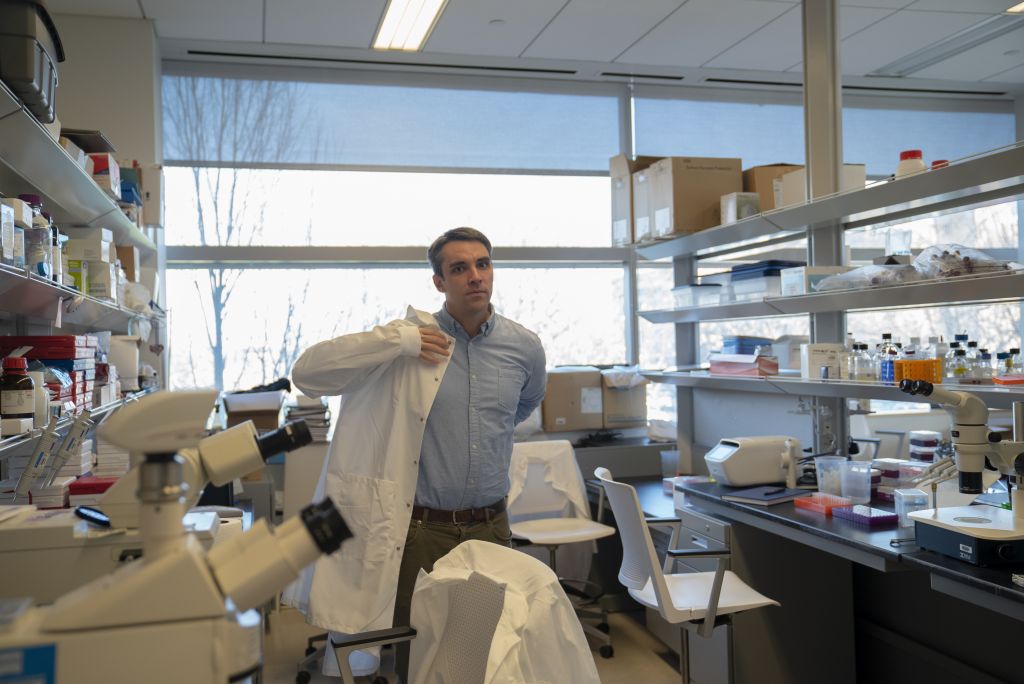On The Rise: David Kennedy Explores New Disease Ecology System
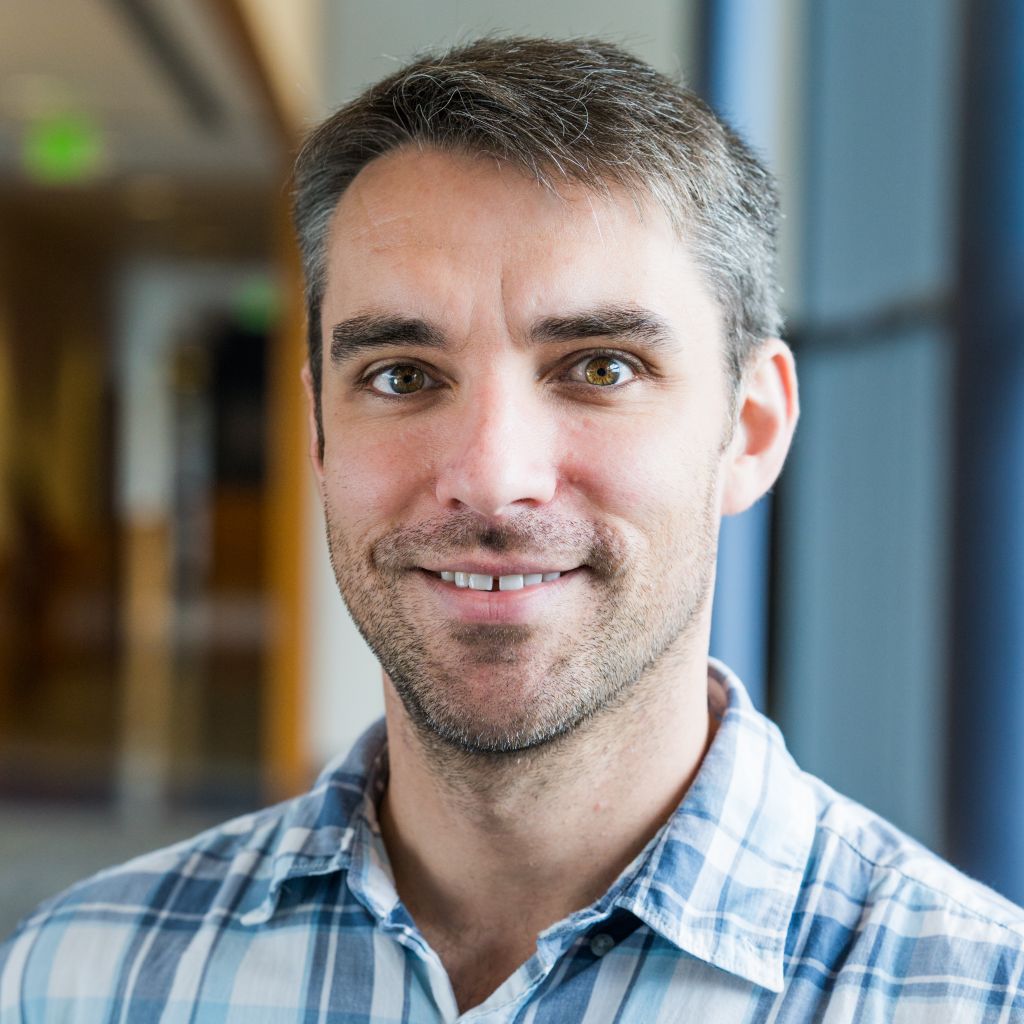
In 2011, in a pile of rotting fruit in the Parisian suburb of Orsay, scientists observed a population of millimeter-long worms having stomach issues. These worms, nematodes of the species Caenorhabditis elegans, were among the best-understood animals in scientific literature. Almost microscopic and lacking respiratory and circulatory systems, C. elegans was deemed simple enough to become the first multi-cellular organism to have its full genome and connectome mapped out. It’s been studied for decades. But these worms had something different: they were infected with a single-stranded RNA virus, the first nematode virus ever discovered.
Six thousand kilometers away, down a flight of stairs and through a card-swipe-accessed door from his office, Dave Kennedy’s lab members are among the few scientists in the world working with the Orsay virus. As of this writing, they are a team of three – Kennedy and postdocs Amrita Bhattacharya and Clara Shaw. But this is about to change. Kennedy is working to recruit grad students for one of the most cutting-edge disease research projects at Penn State. “I don’t know of any other disease ecology labs that are working with this virus,” he explained.
The Kennedy lab is taking old scientific standby C. elegans, combining it with the Orsay virus, and using it to study the ecology of diseases. The team uses mathematical modeling and controlled experiments to understand and predict how pathogens evolve over time and within populations—and are working on questions that could help in the fight against “superbugs,” those resistant organisms which threaten to overwhelm our defenses against infectious disease.
“What’s cool about it is that you can grow entire populations of them in something that’s the size of a petri dish,” said Kennedy. “You can have hundreds, or even a thousand individuals in a space that’s incredibly small, just a couple inches. That’s really nice for when you want to understand how disease is transmitted through entire populations. When you’re looking at the evolutionary dynamics, it’s important to see disease transmission through populations. We have this incredibly flexible host population, where there are all these genetic tools available because people have been studying C. elegans for so long, and now we have this virus that’s a relatively new thing that is essentially an open playground for asking scientific questions. We can really use these tools to start to understand the population consequences of disease ecology on pathogen evolution, and we can do this in controlled experiments where we can manipulate things we really care about. We can look at things like host immune responses and pathogen adaptation to new hosts.”
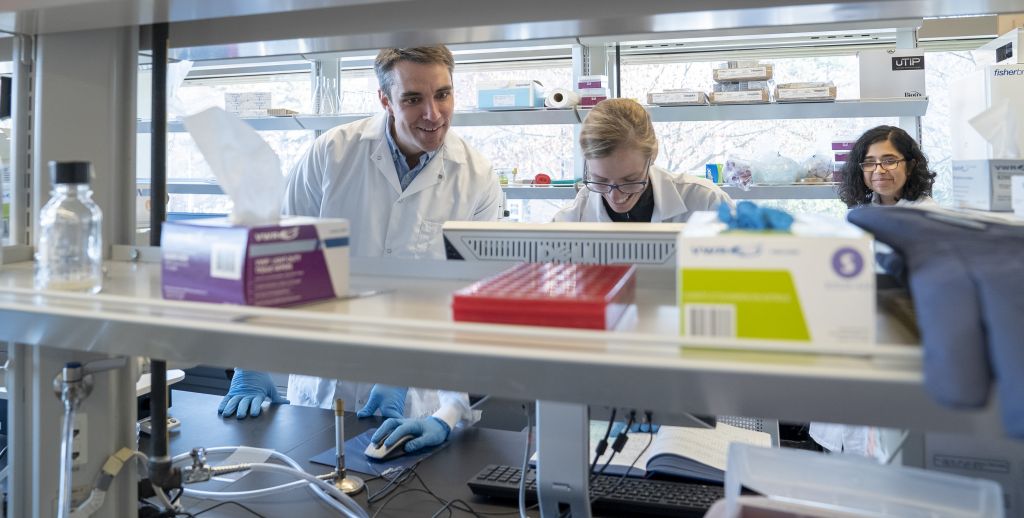
Antibiotic resistance is one of those potential Armageddon scenarios most people vaguely remember hearing on the news but prefer not to think about, like waterborne micro-plastics or bee colonies collapsing. But it’s real, and scientists around the world are working on novel approaches to mitigate its effects. At Penn State, one of the world’s leading experts on the topic is Andrew Read, director of the Huck Institutes and former head of the Center for Infectious Disease Dynamics. Before becoming a professor, Kennedy did his postdoctoral work in Read’s lab.
“We’re really interested in trying to understand how disease ecology drives pathogen evolution,” said Kennedy. “If you look at 100 years ago, average life expectancy in the US was around 45. Today, it’s almost double that. We’re looking at 80, almost 90 years old. Most of that increase has been attributed to our ability to control infectious diseases. We’ve developed improvements in sanitation and hygiene, we’ve developed vaccines, we’ve developed antibiotic drugs… we’ve targeted the most harmful pathogens, and by doing that, we’ve drastically reduced the burden of disease. Pathogens evolve in response to the things that we’re trying to do to control them. We’re seeing the evolution of increased virulence and drug resistance, and we’re observing pathogens in host populations where they never showed up before. “The work in the Kennedy lab is really focused on trying to understand why those things happen,” said Kennedy, “and what we can do to prevent adverse evolution.”
Bhattacharya, one of Kennedy’s two postdocs, studies the differences between chemical treatments—like drugs taken after someone gets sick—and immune system-based interventions that are closer to what a vaccine does.
“Resistance against antibiotics evolves fairly rapidly—within three to four years after a drug is introduced, usually cases pop up. But the same is not true, to that degree at least, for vaccines. Vaccines have been proven to be effective for much longer, and in the few cases where resistance does evolve, the consequences of that seem to be less dire than antibiotic resistance. The question we’re trying to understand is ‘why is there this difference?’ We believe that the inherent differences in ways that drugs and vaccines act could be responsible for this difference. In particular, we know that drugs act on fewer targets in the pathogen, so the bacteria or virus being harmed by drugs is usually harmed in one or two ways, but vaccines stimulate an immune system that can then act on the pathogens in multiple different ways. They can target different things on the pathogen, which makes it harder for the pathogens to evolve—they have to evolve in multiple ways, all at the same time, to avoid vaccines.”
“The other key difference is the timing of administration. Drugs are usually administered when a patient is already sick, and there are a lot of pathogens inside their body. The pathogen population is large, they replicate and mutate more, and resistance can emerge more easily, whereas vaccines prime our immune system to target pathogens pretty quickly after they enter our bodies, so the pathogen populations are smaller when immunity is targeting them, thus reducing the likelihood that resistant mutations pop up.”
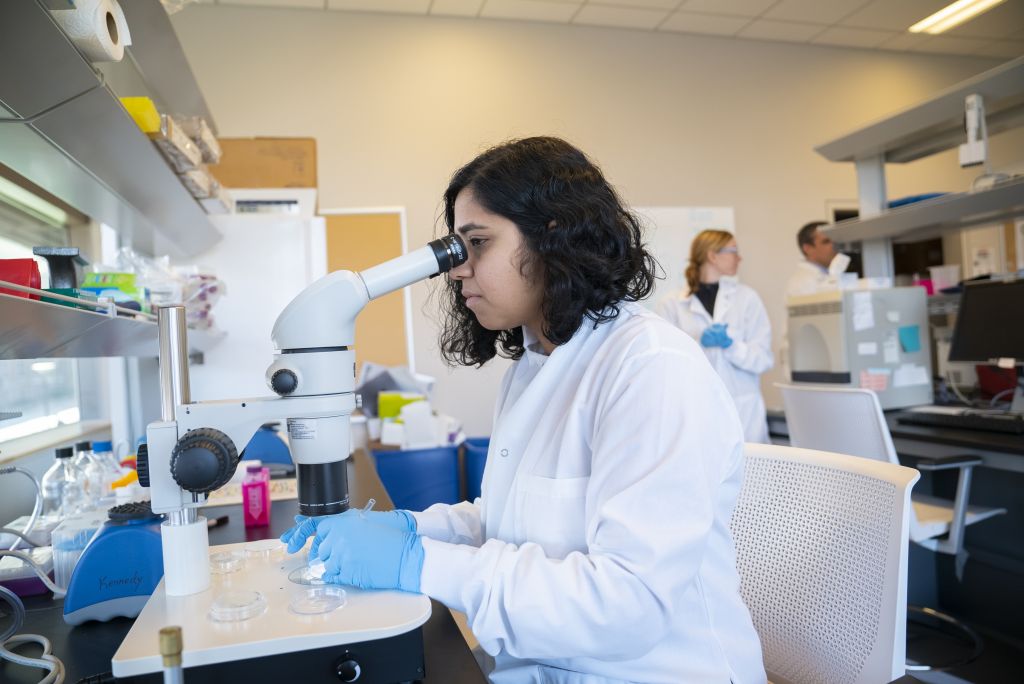
If Bhattacharya’s inquiries lean towards understanding the “disease” half of disease ecology, Shaw’s research aims to fill in the rest of the equation, wading into the murkier areas of how pathogens interact with each other, their hosts, and the populations of their hosts. According to Kennedy, this ecology is driven by the same principles that would affect a population of deer in a forest, and it’s easy to imagine the parallels between a successfully adapted virus and an invasive plant or insect.
“When a pathogen—in our case a virus—first gets into a new host, it may not be very well adapted for using resources and replicating well in that new host,” said Shaw. “If the pathogen is going to persist in that new host type and transmit among individuals of that new host type, it will need to adapt. I’m interested in learning about what adaptations occur right after host jump, and how the virus adapts to the new host.”
“In some cases, viruses become more virulent or more pathogenic as they adapt to the new host, as they get better able to use resources. Or we can imagine that a virus would become less virulent if, for some reason, high pathogenicity hindered virus transmission. We think that the ecology of the original host and the new host could be a really important selective force for guiding the evolution of the pathogen.”
Kennedy will recruit his first permanent graduate students in the coming months and seeks people that can bring curiosity and creativity to a host-virus system where lots of questions haven’t yet been asked.
“I’m looking for people that are driven, that are excited and excitable about science, particularly about evolution and ecology,” he explained. “I look for people that are resilient: there are a lot of challenges in science, there are going to be some very frustrating days, but there are also very exciting days when you get that data and it’s exactly what you were hoping it would be.”
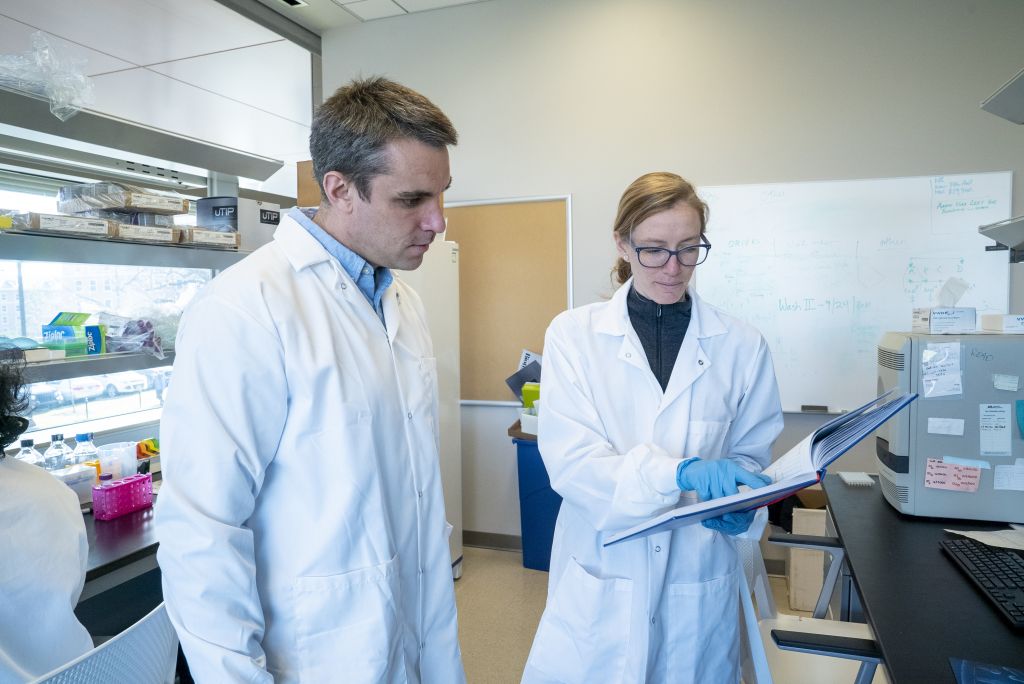
Kennedy’s current lab mates are motivated by his vision and leadership.
“I really appreciate how much time he’s willing to give us,“ said Shaw. “And with the time he gives us, it’s really productive. I’ll come to him with a sort of an amorphous idea that I have, and he will turn it into something exciting and clear and help me figure out a way forward.”
“The other nice thing, working with Dave as a colleague, on the nitty-gritty ‘let’s set the experiment up this way’ details, I’m not on my own, and I think that’s helping me be a better scientist.”
Bhattacharya also enjoys Kennedy’s approach. “This was a new system, and I came in knowing I was interested in the questions, but Dave has been extremely approachable and very structured and that has been very helpful for me to hit the ground running,” she said. “I’ve only been here three months, but I feel like I have a very clear idea of the direction we’re taking. There’s a learning curve: it’s a new system, it’s a new type of question I’m thinking about, but the biggest thing for me is knowing I can go to Dave’s office and knock on the door.”
The topics in the lab often come back to “the system,” and Kennedy is aware of how much he’s risking to pursue a largely untested system based on some tiny worms as the foundation of his research.
“The worm-virus system is completely new. I’ve been playing around with it for a little while, but the hardcore work for it hasn’t really started until this year. It’s a new system with which almost no work has been done. I think that’s really great because there’s so much that we can do with it now that it’s up and running, and there are so many different directions that we can go with it.”
“It wasn’t entirely clear that this was going to work as a model system for disease ecology and evolution, so it’s moving in the direction where I’m very optimistic now that we’re going to get some cool results from it, but developing a new model is inherently risky. But it’s incredibly powerful, to answer these big questions in ecology and evolution that we haven’t really been able to address previously because we didn’t have good model systems with a host with an intact immune system and its natural pathogen and you can have them interact in a natural way, where you have natural routes of infection for these natural host-pathogen interactions, and really manipulate the other details.”
“Almost everything I’ve done so far has been risky,” he admitted, “and it’s a little bit terrifying.”
